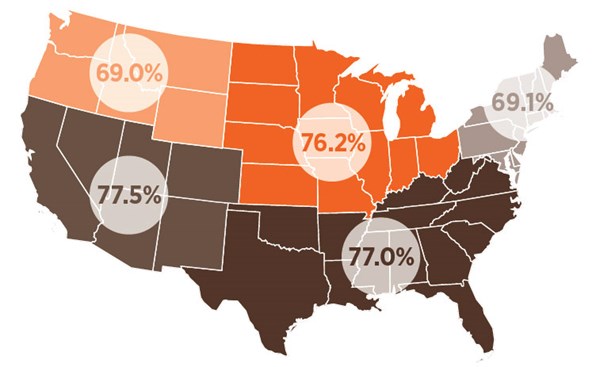 Credit: Courtesy Zoetis Serologic studies show that exposure to Leptospira may be more prevalent than previously understood.1,2 In a 2014 study of 5,261 healthy horses, 75% of the horses tested positive for at least one leptospiral serovar.
Credit: Courtesy Zoetis Serologic studies show that exposure to Leptospira may be more prevalent than previously understood.1,2 In a 2014 study of 5,261 healthy horses, 75% of the horses tested positive for at least one leptospiral serovar.Zoetis published information from a round table discussion on leptospirosis with Terry Blanchard, DVM, DACT, of Texas A&M University College of Veterinary Medicine & Biomedical Sciences; Craig Carter, DVM, PhD, University of Kentucky Veterinary Diagnostic Laboratory; Thomas Divers, DVM, DACVIM, DACVECC, Cornell University College of Veterinary Medicine; and Brian Gilger, DVM, DACVO, North Carolina State University College of Veterinary Medicine. The round table was moderated by Jacquelin Boggs,DVM, MS, DACVIM, Senior Veterinarian, Zoetis Equine Technical Services.
Here are some quick facts from this white paper:
- Equine recurrent uveitis (ERU) is the most common cause of blindness in horses.
- Leptospires are the most commonly identified etiologic agent in ERU.
- More than 400,000 horses in the U.S. suffer from leptospiral-associated ERU.
- Leptospiral-associated uveitis is estimated to cost the industry $561 million from loss in horse value due to visual impairment and blindness.
- Leptospiral-associated uveitis has been estimated to cost U.S. horse owners $2.1 billion, including the cost of diagnosis, treatment and loss in value of horses that become visually impaired or blind.
Risk factors for equine leptospirosis include:
- Stagnant, slow-moving water and ponds
- Increased rainfall, flooded horse pastures
- Skunks, white-tailed deer, raccoons, opossums or other wildlife sharing horse pastures
- Keeping feed or hay in open containers, feeding horses on the ground
- Horse(s) on the premises diagnosed with ERU, leptospiral-associated abortions or acute renal failure
The following quotes are from the participants:
Dr. Gilger: “Most horses that develop recurrent uveitis won’t go back to their previous performance level. You have to either buy a new horse or do different things with that horse, so that impacts the economic value of that horse substantially.”
Dr. Blanchard: “There’s really no safety data on using leptospirosis vaccines licensed for use in cattle, for instance, in a horse. If there are any adverse reactions, it’s difficult to defend your vaccine choices.”
Dr. Carter: “The Leptospira organism likes a moist environment; it seems to thrive in rainfall. In Kentucky, the frequency of abortion increases during the years where we have high rainfall. That always leads to standing water and this is where the organisms congregate.”
Dr. Divers: “Attempts should be made to improve feeding procedures such as not feeding hay or grain on the ground, and keeping rodents and wildlife out of the barn. I think it’s going to be very difficult to totally prevent exposure, since the serologic survey demonstrates that so many horses in the United States actually have antibodies against Leptospira. So hopefully a vaccine will be helpful in helping prevent infection.”
You can download the white paper here.








